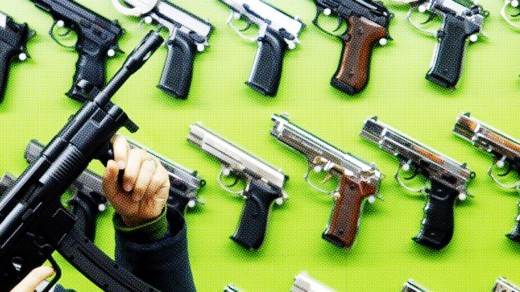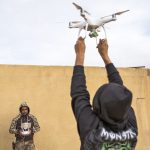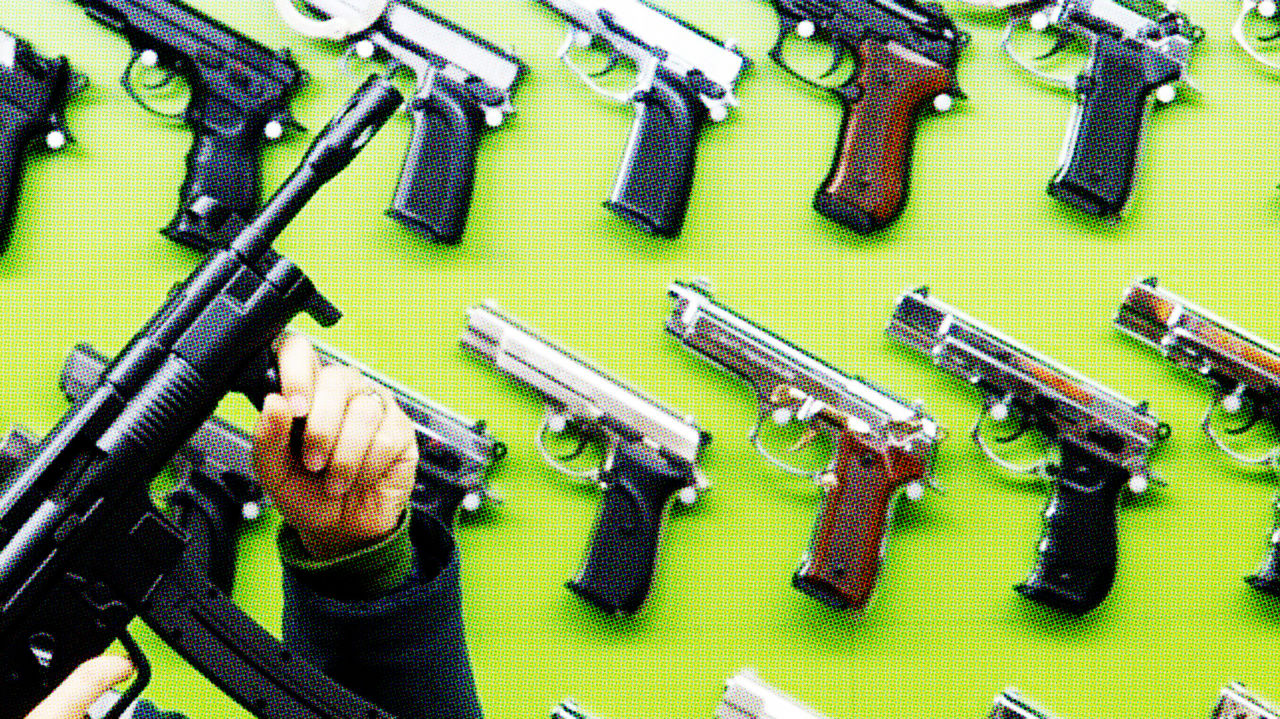international Crises And financial increase pressure Rising U.S. Weapons gross sales
In a race to promote the world its weapons, particularly in new markets like Africa, Russia isn’t some distance at the back of the U.S., and China is surging.
March 27, 2015
one of the most options of the 21st century, in particular for the reason that 2008 monetary drawback, has been the increasing choice of rankings during which the united states is not primary. Title of top palms exporter, alternatively, just isn’t one in all them—at least now not but—with the U.S. maintaining its number one spot virtually yearly for the reason that cold war ended.
ultimately month’s world safeguard Exhibition in Abu Dhabi, round 1,200 companies from 56 countries showcased their hardware, looking to promote their excessive-resolution surveillance satellites, Reaper drones and Kalashnikov rifles to the government officers and armed forces brass in attendance. numerous American palms makers had been readily available in hopes of maintaining their global dominance.
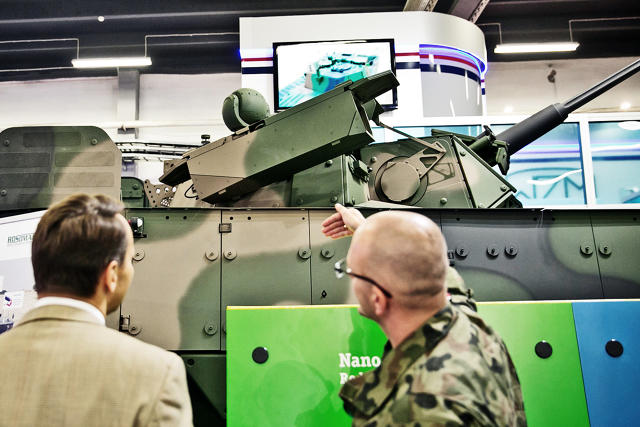
The U.S. managed 31% of the global market for weapons exports from 2010 to 2014, up from 29% from 2005 to 2009, consistent with the Stockholm international Peace research Institute (SIPRI), the world’s best possible-identified collector of protection spending and weapons change data. Russia came a detailed 2nd with 27%, a significant increase from 22% within the prior length, followed via China, Germany, and France each and every with a 5% share of the fingers market.
the quick-rising wealth of emerging markets like India and countries in Africa which might be gobbling up a growing share of weapons is swiftly changing the hands market, particularly as global instability seems to develop 12 months after year. The surge in conflicts involving non-state actors in the center East and Africa is also forcing more international locations to refill, growing extra demand for tanks, developed weapons programs, and especially gentle arms.
And regional rivalries between India and its neighbors Pakistan and China, as well as Saudi Arabia and the Gulf states with Iran, continue to simmer. govt coffers, full of income from oil, manufactured goods, and different exports, can quite simply be tapped to purchase weapons from in a foreign country, even if spending on schooling, well being, and infrastructure may present larger lengthy-term advantages. The U.S. Congressional analysis carrier estimates that global arms transfers rose from about $fifty one billion in 2004 to $eighty five billion in 2011, totaling more than $500 billion over the eight-yr length.

U.S. corporate Dominance
in the meanwhile, the worldwide safeguard business is still a local of US corporate dominance. Six American companies positioned among the high eight world corporations, in accordance with safety-associated revenues. Lockheed Martin topped the list with $35 billion in fingers gross sales, with Boeing in 2d place ($31 billion). Raytheon ($22 billion), Northrop Grumman ($20 billion), and common Dynamics ($19 billion) ranked fourth thru sixth, whereas United technologies ($12 billion) took eighth.
obviously, a big element of the revenues generated with the aid of these firms comes from the U.S. division of protection. however exports are essential, since it lets in the companies to supply better portions of fighter planes, tanks, and different weapons methods, thereby riding down the per unit value, which indirectly advantages the Pentagon and American taxpayers.
So while palms exports assist achieve nationwide safety and overseas coverage objectives, they provide significant economic advantages as neatly, particularly for the workers and communities the place production is located.
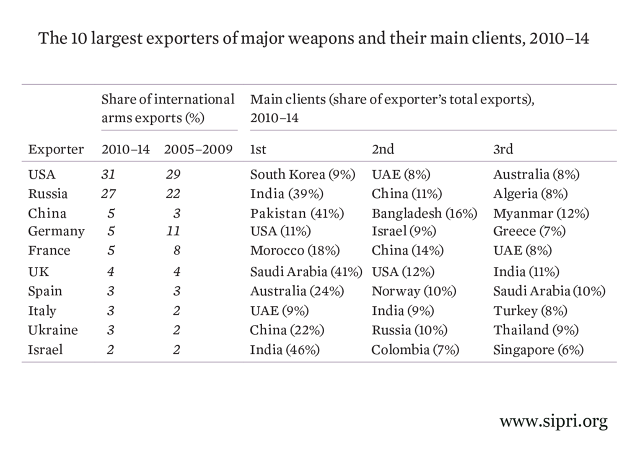
Who’s buying
buyers in Asia and Oceania snared the most U.S. weapons, or forty eight%, while recipients in the middle East bought 32%. another eleven% went to Europe. in the meantime, Russia’s largest patrons have been India, China, and Algeria, which consumed 60% of its hands exports. general, it sold fingers to 56 international locations and the rebels it backs in Ukraine, according to SIPRI.
some of the attention-grabbing, and most likely tense, international traits is the elevated defense spending and weapons exchange by rising market economies. India was the biggest importer of weapons from 2010 to 2014, accounting for 15% of all world arms imports, adopted via Saudi Arabia, China, and the United Arab Emirates.

As countries in Asia and Africa get richer, greater sums are being spent on protection, in particular weapons imported from the sector’s biggest producers.
Africa, which has skilled one of the vital world’s most spectacular financial increase over the last decade, saw hands imports raise 45% over the past five years. a part of this is because of windfall revenues earned by way of oil-producing nations, while inter-state rivalries between Algeria and Morocco and intra-state conflicts in Nigeria and Cameroon force further demand.
China, whose economy not too long ago surpassed that of the U.S. on a purchasing energy parity basis, has moved into 1/3 position in weapons exports for the first time, signifying the u . s . a .’s rising importance in global affairs. It additionally presentations off China’s impulsively rising safeguard funds, which considerations lots of its neighbors, in addition to the us.
The Illicit hands Market
traditionally, nations have been the principle patrons of armaments. on the other hand, the upward push of non-state actors equivalent to Al-Qaeda, Boko Haram, and ISIS has raised concerns about weapons falling into their hands. businesses such as these hardly ever purchase weapons immediately from the best palms-exporting countries—on no account planes, tanks, and heavy artillery.
Terrorist and guerrilla teams typically collect weapons in two methods. the first is the illicit change of small fingers and lightweight (man-moveable) weapons akin to assault rifles, grenades, mortars, and land mines. Many of these weapons have been in circulation for many years, the results of U.S. and Soviet beef up for his or her respective allies during the cold battle.
Such weapons are simply smuggled across borders as of late, facilitated by means of all of the financial, logistic, and conversation advantages that globalization offers to reliable world commerce. When nations like Libya cave in into civil conflict, their supply of weapons is speedy acquired through factions within the u . s . a ., or enters the illicit world hands market.
The 2nd manner that non-state businesses acquire weapons is from soldiers they defeated in struggle, or defense force provides from areas they conquered. So, as an instance, Boko Haram advantages from sympathizers in the Nigerian armed forces who have facilitated the transfer of weapons to the terrorist team, as well as porous borders that make it straightforward to move weapons from neighboring nations.
ISIS received many mild weapons from the battlefield where it defeated Iraqi forces, and more subtle weapons when it overran Iraqi militia bases. it’s an unlucky indisputable fact that far extra folks all over the world, particularly non-warring parties, are killed via these light palms and weaponry than by way of the a ways more expensive weapons methods associated with main security contractors like Lockheed Martin or U.okay.-primarily based BAE systems.
The put up-9-11 fingers World
in the publish-11th of September world, military leaders are prioritizing command, regulate, communications, computer systems, intelligence, surveillance, and reconnaissance over more traditional weapons programs like airplane, ships, and tanks. as a result, much less well-identified corporations comparable to L-three Communications, Exelis and Leidos are quick moving up the worldwide rankings by producing high-tech avionics, drones, encryption devices, sensors, night time vision goggles, and information expertise services.
in response to cuts in U.S. security budgets within the years following the Iraq and Afghanistan draw-downs, most safeguard companies have diversified their sales to extra non-protection purposes, or to different countries by means of exports. These developments have made competitors for Pentagon weapons contracts even more extreme, when you consider that fewer and better-priced objects are being obtained.
but this appears to be transferring in gentle of heightened ranges of global insecurity from the likes of terrorist teams, provocations via Russia, rivalries in Asia, and nuclear ambitions in Iran and North Korea. In up to date weeks, Congress has called for will increase in protection spending. And other nations are the usage of their rising economic power to increase their military power as neatly so they are able to higher protect their interests and elevate their regional and international influence.
at the finish of the day, the main winners of world insecurity are more likely to be security companies.
Terrence Guay is a scientific professor of international trade at Pennsylvania State college. His analysis has been funded partially by using the U.S. army struggle school Strategic studies Institute. A version of this text in the beginning regarded at The dialog.
fast company , learn Full Story
(158)

